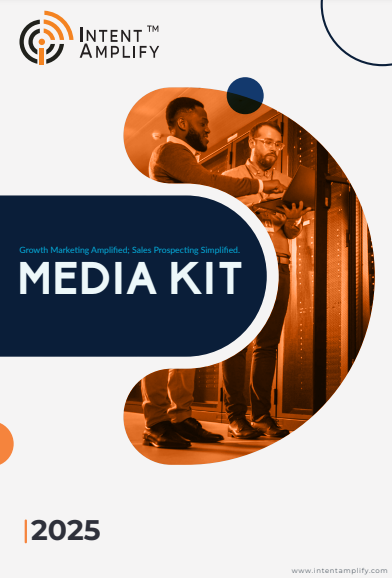
What Success in Global B2B Marketing Really Means?
- Last updated on: August 9, 2022
Understanding the return on Global B2B marketing investments is crucial to delivering effective marketing programs that achieve your company’s needs and goals.
Consistent with a 2019 survey from the Content Marketing Institute, the most successful companies spend more time than others to measure their marketing ROI. Marketers can succeed with their campaigns with a clear roadmap for measuring marketing metrics. What are these marketing metrics after all?
Brand-Oriented Versus Revenue-Oriented Metrics.
Marketers can’t quantify their performance in a vacuum. To report their performance, two categories garner maximum attention from marketing teams. These are brand metrics and revenue metrics. Understanding the utilization of both metrics is critical to achieving a higher return on your marketing investment and growth.
What are Brand Metrics in Global B2B Marketing ?
Brand metrics quantify a brand’s performance, based on past campaigns and future readiness related to awareness and positioning. Marketers measure brand metrics using social media engagements, website traffic and CTRs, and keyword search volume. They also consider customer acquisition cost, NPS, customer retention and loyalty, and reviews and recommendations.
Why should marketers evaluate brand metrics?
When it involves brand awareness, it’s crucial to specialize in the right people and make them aware of your business at the right time. Brand awareness puts the product and services in front of the right people (potential customers). These prospects have a higher propensity to engage with brands with better metrics. The different best marketing key performance metrics (KPIs) measure these. Specifically, calculate the click-through rate (CTR) by dividing the number of ad clicks by the number of ad views. This metric could be a great indicator because of the average time a customer spends on your website.
Revenue-oriented marketing metrics measure what proportion of the audience is converting into paying customers. They’re also mentioned as conversion metrics because this data may be just one piece of the sales/revenue-generating process, particularly if there is a longer sales process that marketing-derived leads go through. These metrics often narrow down to sales metrics, such as customer lifetime value, cost of sales, and customer acquisition costs. There also are finance metrics, which track the general financial status of your company, like your margin of profit, revenue per employee, and return on ad spend. These metrics provide insight into the underside of the marketing funnel for those clients who are buying, renewing, or leaving.
Because both brand-oriented and revenue-oriented metrics fluctuate, they should be measured often – on a weekly or maybe daily basis – and reviewed by management.
Beware of Vanity Metrics.
All brand-oriented and revenue-oriented metrics are important, but it’s necessary to differentiate between vanity metrics and actionable metrics. Vanity metrics look amazing on paper but don’t deliver specific tangible business results. Brand awareness metrics like the number of followers, views of a specific video or likes do not on their own drive actionable insights. Therefore, they go to be seen as vanity metrics, and focusing solely on them won’t deliver results.
Instead, identify and concentrate on the actionable metrics that genuinely matter to the success of your business. These data provide insight into the tangible steps to wish in order to drive profit. Among the foremost valuable data points are conversion rates and A/B testing results. Conversion rates indicate that the established buyer’s journey is yielding customers, and a lower yield means it’s time to tweak the journey. A/B test results highlight success in messaging and call to action. They ask: is that the audience doing what you’d like when you ask them to do it?
For the standard B2B company, vanity metrics aren’t helpful for actionable decision-making, but they’re valuable as a gauge of brand awareness. Follower data and engagement stats show your position in brand awareness, reflecting customer perception. Metrics like audience growth rate (follower acquisition speed) and post reach (visibility) are crucial. While conversion metrics and vanity data are effective, they alone don’t reveal specifics about what works in your business model.
Demonstrate Your ROI: because of Delivering to Executives.
Senior executives expect marketing to demonstrate how investments contribute directly to organizational objectives. They require insights into the brand’s market position and perception among the target audience (brand equity), as well as metrics on customer conversion rates and revenue growth.
The KPIs reported to senior management have to align with the business strategy and financial goals of the company. Start with the very best goal in mind. For example, if the goal is a 15% revenue increase, marketing metrics must show how marketing contributes to this goal. Therefore, metrics like marketing lead conversion rates and conversion velocity are important. Revenue per lead will also highlight to executives the path that the firm’s marketing is on.
Marketing metrics are designed to assist businesses to grow in alignment with a company’s vision.
Brand metrics analysis is the backbone of growth marketing. These metrics help analyze the topmost component of the marketing funnel. They broadly indicate how many people are aware of your business and what portion of them are likely buyers of your product or service.
How Intent Amplify Accelerates Global B2B Marketing Growth?
Intent Amplify is a privately held B2B lead management company that helps businesses amplify their lead generation and management efforts. We offer a suite of solutions that help businesses interact with potential customers across channels, and help them manage their sales pipelines more effectively. Our solutions are multi-lingual, and our team has deep expertise in lead generation and management. We work with businesses to help them empower their sales teams through meaningful interactions with potential customers.




